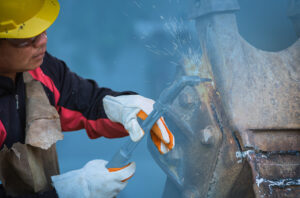The term upper limb disorders refers to a broad range of conditions affecting the fingers, hands, wrists, arms, shoulders and neck which often involve stiffness, aches, pains and cramps. In a work environment these can be caused or made worse by a number of factors including prolonged repetitive work especially when suitable rest breaks are not provided, uncomfortable or awkward working postures, tasks involving sustained or excessive force and working with hand-held power tools for long periods.
As an employer you have a duty to assess all risks in your workplace including the risks associated with upper limb disorders. But how much detail do you need to go into?
The HSE have recently updated their guidance on this topic to include a simple filter to help you identify those tasks are higher risk and require more detailed assessment.
Once you have assessed tasks you then need to take action to control any risks that have been identified and where possible eliminate those risks. The HSE recommend that you should prioritise those higher risk activities and risks that affect the most workers. Some examples of possible actions that may be taken include:
- Changing workstation layout to improve posture.
- Making sure workstations are at a comfortable height for the work and suitable chairs and footrests are provided where required. Adjustable workstations may help.
- Make sure tools are suitable for the task and can be comfortably operated.
- Break up work for example by varying the tasks carried out, rotating work or introducing breaks so that workers are not spending long periods doing the same repetitive task and can have regular changes of posture.
- Take action to reduce vibration levels, force required, repetition and time spent in a fixed posture.
Further suggestions and the risk assessment filter can be found in the HSE’s leaflet “Managing upper limb disorders in the workplace: A brief guide INDG171”. Which can be downloaded from the HSE’s website at https://www.hse.gov.uk/pubns/indg171.htm?ebul=hsegen&cr=10/19-aug-13
When making any changes it is recommended that you test these with a small number of workers first, before introducing them for everyone. Also you should regularly monitor the effectiveness of any controls you put in place to make sure they are working.
Please speak to your normal PIB Risk Management contact or get in touch using Email: [email protected] if you have any questions about work related upper limb disorders or managing manual handling in your workplace.

A Conversation with John Lester, Our New Sales Director

Getting Muddy for a Great Cause: PIB Risk Management Team Take on Tough Mudder

Employment Rights Bill – Government Publishes Implementation Roadmap

The Sun’s Out – Time To Get The Shorts Out?

Updated Gas Safety Guidance
